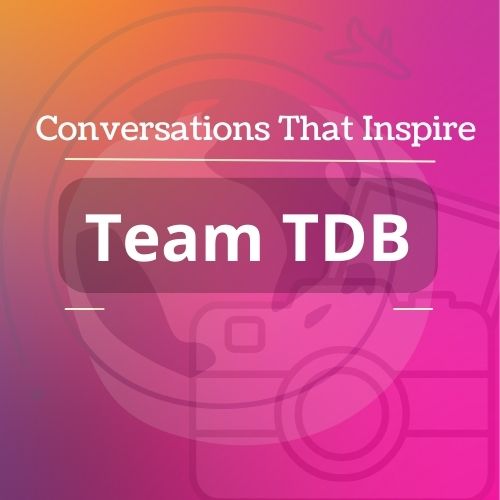With the enforcement of LPG policy in 1991, there has been an enormous development in various spears of Indian economy. With such advancements along with rocketing technological growth; the importance of intellectual property has seen an exponential rise. Furthermore, with initiatives like Make in India this surge is expected to reach greater heights, providing an impetus for us to be a part of this evolution.
Intellectual Property (IP)
Intellectual Property (IP) refers to the ownership of an idea or design by the person who came up with it. It gives the owner exclusive rights to the producer and restricts copy or reuse by others without owner’s permission. It can be applied to streams of music, literature and artistic works, invention and discoveries, to name a few.
Significance of Intellectual Property Rights
- It separates your business from rivals
- They can be sold or authorized, giving a significant income stream
- It offer clients something new and extraordinary
- They structure a basic piece of your advertising or marking
- They can be utilized as security for credits
Types of intellectual property include
- Trademarks
- Copyright
- Patents
Trademark
“Every Trademark you build adds to the financial value of your business, much more than your tangible assets”
Kalyan C. Kankanala
A trademark is a conspicuous sign, plan, or articulation which distinguishes items or administrations of a specific source from those of others. An individual who sells his products under a specific exchange imprint secures a kind of restricted elite appropriate to the utilization of an imprint in connection to those merchandise. Under present day business conditions an exchange imprint performs 4 capacities: (1) it recognizes the item and its starting point, (2) it ensures its unaltered quality, (3) it publicizes the item, (4) it creates an image for the product. Trade mark in India is governed by Trade Marks Act, 1999
Copyright
 Copyright is a law that gives the proprietor of a work, the privilege to state how other individuals can utilize it. It implies the selective appropriate to do or approve others to do certain demonstrations in connection to (1) unique, scholarly, sensational, melodic and masterful works, (2) cinematograph movies, and (3) sound chronicles. Copyright laws make it simpler for creators to make cash by selling their works. On the off chance that somebody duplicates a work without consent, the proprietor can say they encroached their copyright.
Copyright is a law that gives the proprietor of a work, the privilege to state how other individuals can utilize it. It implies the selective appropriate to do or approve others to do certain demonstrations in connection to (1) unique, scholarly, sensational, melodic and masterful works, (2) cinematograph movies, and (3) sound chronicles. Copyright laws make it simpler for creators to make cash by selling their works. On the off chance that somebody duplicates a work without consent, the proprietor can say they encroached their copyright.
The object of copyright law is to energize creators, writers, craftsmen and originators to make unique works by remunerating them with the exclusive right for a constrained period to misuse the work for money related increase.
Not a wide range of work can be copyrighted. A copyright does not secure thoughts, revelations, ideas, and hypotheses. Brand names, logos, mottos, space names, and titles additionally don’t go under copyright law. The Indian Copyright Act, 1957 and the Indian Copyright Rules, 1958 oversees the arrangement of copyrights in India.
Instances of works in which copyright subsists: novel, film, verses to a tune, an arrangement for a structure.
Patent
“A patent a day keeps the competitor away.”
Kalyan C. Kankanala
A patent is a selective right allowed to an individual who has invented a new and useful article or an improvement of an existing article.. It comprises of an elite appropriate to make the new article for a restricted timeframe. After the expiry of length of patent, anyone can utilize the development. The proprietor of the patent can give licenses to others to exploit the patent. Licenses give an impetus to organizations or people to keep creating inventive items or administrations without the dread of encroachment.
For instance, enormous pharmaceutical organizations can burn through billions of dollars on innovative work. Without licenses, their medications and prescriptions could be copied and sold by organizations that didn’t inquire about or contribute the required capital for R&D. In India, Law of Patents is represented by Patents Act, 1970.
Advantages of Patents
- A patent gives you the privilege to prevent others from duplicating, assembling, selling or bringing in your creation without your consent.
- You get assurance for a pre-decided period, enabling you to keep contenders under control.
- You would then be able to utilize your development yourself.
- On the other hand, you can permit your patent for others to utilize it or you can sell it. This can give a significant revenue for your business.
Procedure for Patent Registration in India
The procedure includes writing down the invention (idea or concept) with as much details as possible. For example:
- Area of invention
- Description of the invention what it does
- How does it work
- Advantages of the invention
Additionally, drawings, diagrams or sketches explaining working of invention can be specified. They should be designed to explain the working of the invention in better way with visual illustrations. They play an important role in patent application. Further it’s important to check whether the invention is patentable subject matter. All inventions may not be patentable, as per Indian Patent Act there are certain inventions that are not patentable.The next step would be finding out whether your invention meets all patentability criteria as per Indian patent act? That is,
- Novelty
- Non-obviousness
- Industrial application
- Enabling
The patentability opinion is provided by the patent professionals upon conducting extensive search and forming patentability report.
At the end it’s up to the owner to decide whether to go ahead with patent. The patentability report and opinions come handy, helping the owner decide whether to go ahead with the patent or not, chances are what you thought as novel might already been patented or known to public in some form of information. Hence this report saves a lot of time, efforts and cost of the inventor by helping him decide whether to go ahead with the patent filing process or not. Finally, the process includes meticulous drafting (writing) of patent application. In case you are at very early stage in the research and development for your invention, then you can go for provisional application.
It gives following benefits:
- Secures filing date
- 12 months of time to file complete specification
- Low cost
After filing provisional application, you secure the filing date which is very crucial in patent world. You get 12 months of time to come up with the complete specification, upon expiry of 12 months your patent application will be abandoned.
When you complete the required documents and your research work is at level where you can have prototype and experimental results to prove your inventive step you can file complete specification with patent application.
Filing the provisional specification is the optional step, if you are at the stage where you have complete information about your invention then you can directly go for complete specification.Upon filing the complete specification along with application for patent, the application is published after 18 months of first filing.
An early publication request can be made along with prescribed fees, if you do not wish to wait till the expiry of 18 months from the date of filing for publishing your patent application. The patent application is examined only after receiving Request for Examination that is RFE. Up on receiving this request the controller gives your patent application to a patent examiner who examines the patent application with different patentability criteria like:
- Patentable subject matter
- Novelty
- Inventive step
- Industrial application
The examiner creates a first examination report of the patent application upon reviewing it for above terms. This is called patent prosecution. Everything happening to patent application before grant of patent is generally called as patent prosecution.
The first examination report submitted to controller by examiner generally contains prior arts (existing documents before the date of filing) which are like the claimed invention, and same is reported to patent applicant. Majority of patent applicants will receive some type of objections based on examination report. The best thing to do it analyze the examination report with patent professional (patent agent) and create a response to the objections raised in the examination report.
This is a chance for an inventor to communicate his novelty over prior arts found in the examination report. The inventor and patent agent create and send a response to the examination that tries to prove to controller that his invention is indeed patentable and satisfies all patentability criteria’s. If objections are resolved the patent is granted. The grant of patent is notified in the patent journal which is published regularly.
The expense of recording a patent application in India, for an individual is Rs. 1750/ – (paper documenting) and demand for examination is Rs. 4400/ – (paper recording), while for web based documenting it is Rs. 1600/ – and Rs. 4000/ – individually, however the candidate must have an advanced mark to do that. For new businesses and start-ups the expenses may vary.

About the Author
Vaishali Jain is an aspiring Lawyer from Government law college, Mumbai . She hails from a business family and has a background in Management Studies. She has interned at Gajria & Co and is currently honing her skill set under the guidance of Senior Advocate Arif Bookwala. She aims at not just exceling in her career but making a difference in the society, lawfully!
Image Credits: pixabay.com, freepik.com





















